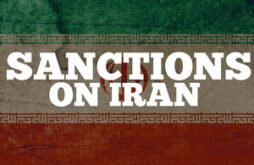Radiofarda – One of the objectives of Iran’s annual budget for the next year is to decrease poverty, according to Iranian officials. This comes after news of the latest report by the parliament’s research center, which says 11 percent more people have fallen below the poverty line in the Tehran region as the national currency rial has lost value dramatically over the past seven months.
The parliament puts the poverty line in the Iranian capital, Tehran, at about $233 based on the free market exchange rate or $480 based on the official exchange rate (roughly a monthly income of around 28 million rials) for a family of four and slightly more than one-fourth of that for a single person.
Some 5 percent to 15 percent of Iranians live below this absolute poverty line nationwide, the parliamentary report says, adding that until 2016 the percentage of those living in poverty was still a single-digit figure.
At that time, the rate of exchange was around 40,000 rials per U.S. dollar, roughly one-third of the current rate. The poverty line was defined as access to minimum resources for survival.
Today, the poverty line is set higher due to high inflation, unemployment rates, and other negative factors. “In provinces such as Tehran and Isfahan, the poverty line is as high as 50 million rials,” said Ahmad Reza Moini, a member of the Labor Council.
Why Is The Poverty Level Rising?
Generally, poverty is attributed to insufficient economic growth and imbalanced distribution of resources. In Iran’s oil-based economy, distribution of privileges based on political, family and social connections plays a major role in exacerbating inequality, leading to more poverty.
Lack of growth (recession) or insufficient growth coupled with uncontrolled inflation drives family budgets out of balance and pushes them lower toward poverty. At the same time, high inflation reduces households’ purchasing power.
In recent years, the government has ended public services such as education and medical insurance or now provides them at a higher price, meaning households spend more resources on these services.
Various political, social, and economic factors affect the distribution of income in Iran. Poverty caused by inequality multiplies and adds to the divide between social classes and leads to more poverty.
Next Year’s Budget and Poverty
The government claims to have tried to reduce poverty in next year’s budget. But how can one prevent further poverty while the economy as a whole is getting smaller? The precondition for reducing poverty and decreasing the number of poor people is a bigger economy with more purchasing power for everyone, improved economic growth, and lower inflation.
International bodies such as the International Monetary Fund and World Bank and Iranian economic institutions agree sanctions will lead to negative economic growth and a smaller economy in Iran in the next two years. The IMF forecasts 1.4 percent and 3.6 percent negative economic growth for the next two years, respectively.
Under such circumstances, the government can only redistribute the same declining wealth. This will have a limited and unstable effect that cannot eradicate the prevalence of poverty.
Distributing welfare packages of necessities to a large part of society is tantamount to the government confessing it cannot prevent poverty through conventional ways such as boosting economic growth and employment. These aid packages have more symbolic significance than economic importance. They simply show that the government is not sitting idle and is doing something, hoping to tackle poverty.
As one social media user put it, in the Iranian capital, the poverty line has moved from downtrodden Revolution (aka Shahreza) Avenue in downtown Tehran to Hemmat Expressway, several miles to the formerly affluent north.
 Shabtabnews In this dark night, I have lost my way – Arise from a corner, oh you the star of guidance.
Shabtabnews In this dark night, I have lost my way – Arise from a corner, oh you the star of guidance.


